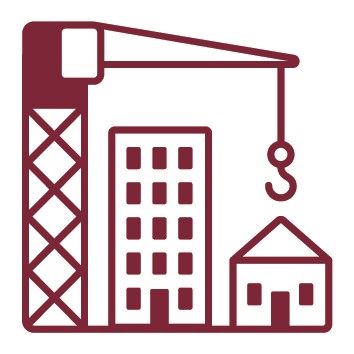The history of how turbary rights evolved has resulted in what is often an intricate web of interests in bog-land. Turbary rights may contain common rights, turbary trusts or licences which need to be appropriately managed early on for the successful development and operation of a windfarm.
What is a turbary right?
A turbary right refers to the ancient right or easement to dig, cut and carry away turf on a bog located on another person’s land to use as fuel for one’s house. To a lesser extent, a turbary right also refers to a right to cut bog mould for use as manure.
Initial considerations
 At the development stage of a windfarm project, identifying the relevant turbary rights holders may prove challenging. This is because it is often the case that the map recording the right holders on the Register of Turbary Rights, maintained by the Department of Agriculture, may differ to Land Registry records. This issue can be further complicated in instances where the person actively using the turbary plot in question may differ again to the person identified on the Register.
At the development stage of a windfarm project, identifying the relevant turbary rights holders may prove challenging. This is because it is often the case that the map recording the right holders on the Register of Turbary Rights, maintained by the Department of Agriculture, may differ to Land Registry records. This issue can be further complicated in instances where the person actively using the turbary plot in question may differ again to the person identified on the Register.
Establishing the location of and requesting the maps held by the Department of Agriculture should be factored into transaction timelines as it can take a number of weeks for the relevant maps to be released. From a practical perspective, adjoining turbary right holders may know the identity of the current users of a turbary plot. A developer should consider seeking consents and releases from all turbary right holders, both registered or unregistered, connected to each relevant turbary plot.
A right of turbary will carry with it a right to access the bog to cut and carry away the turf. The location of the right of way should be identified to ensure it does not interfere with proposed works.
Protect yourself
Has the turf been cut? If a bog has been cut out and depleted, there is no right for the turbary right holder to the remaining soil. To establish that the right of turbary has been extinguished is a matter of fact. Therefore, a specialist engineer should be engaged to produce evidence that the turbary right has been extinguished.
Where the bog is still capable of being harvested, the requisite consents and releases to use the lands subject to the turbary rights should be obtained from all relevant turbary right holders.
A developer may consider obtaining title insurance to safeguard its position against any third party alleging turbary rights at a later date.
Conclusion
The compensation available for owners of turbary rights on blanket or raised bogs under the Scheme for Special Areas of Conservation and National Heritage Areas has increased the value of these rights. From the outset, the windfarm company should establish, as far as it can, the identity, nature and value of turbary rights to avoid future surprises.
For more information on mitigating the risk associated with turbary rights, please contact a member of our Energy, Utlities & Projects or Real Estate teams.
The content of this article is provided for information purposes only and does not constitute legal or other advice.



